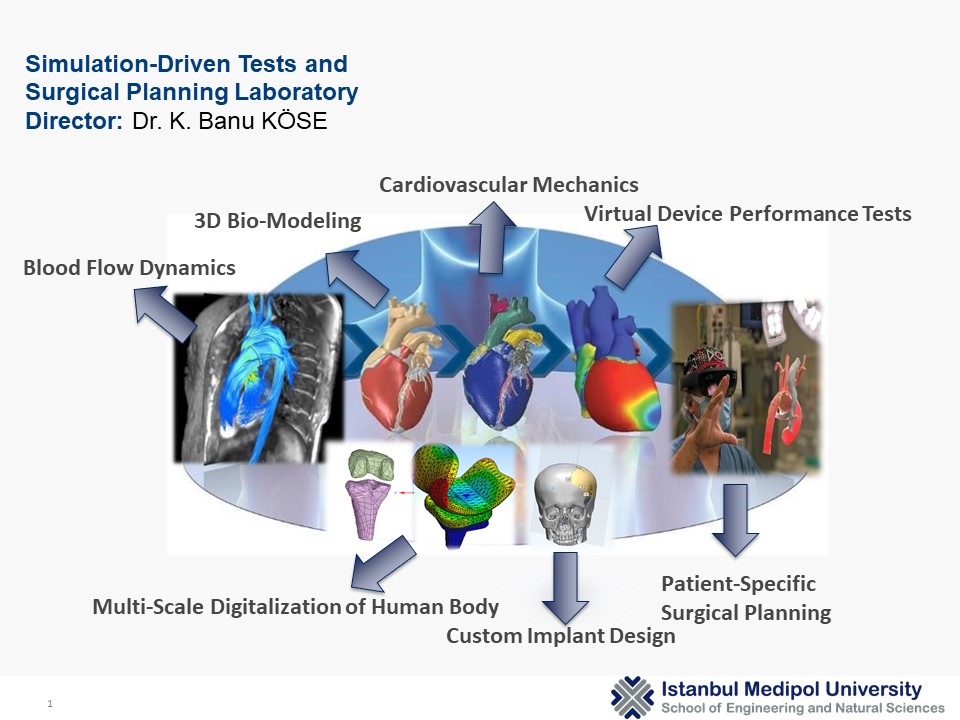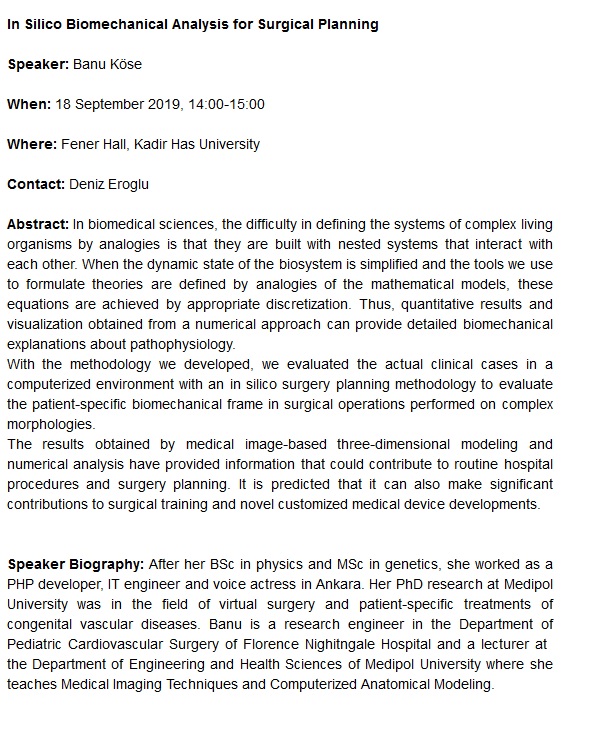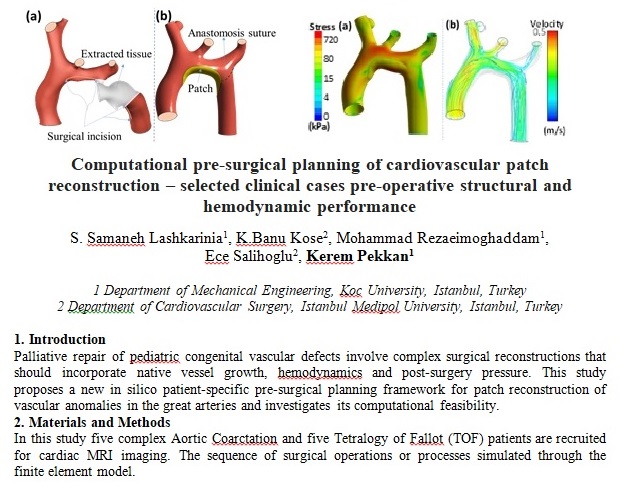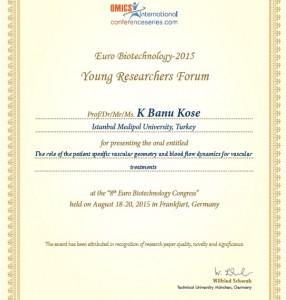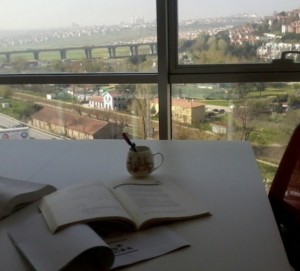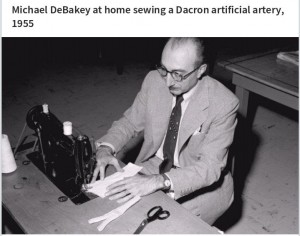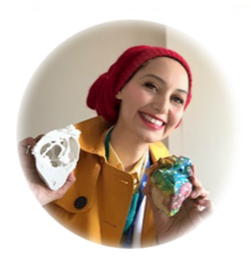Comments Off 
JUNE 4TH, 2021
By BANU PLUIE
A team I am honored to be involved in EVBio!
EVBio is a digital think tank formed by scientists from all disciplines related to vascular medicine, from molecular biology to scientific computing. Our mission is to imagine the future through disruptive basic and translational research. Our team works tirelessly to formulate one universal coherent theory for vascular disease and support all global efforts towards its conception and validation.
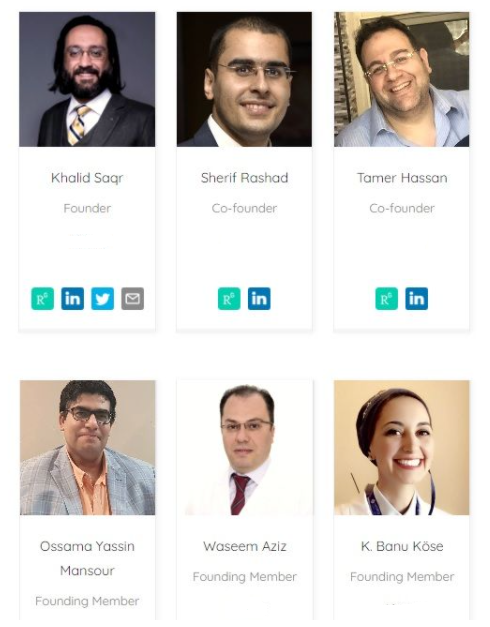
Our membership will increase soon!
Comments Off 
FEBRUARY 27TH, 2021
By BANU PLUIE
We talked about cardiovascular engineering and its future. I was honored to be a guest in Future Research Institute. Many thnaks to Coskun Dolanbay.
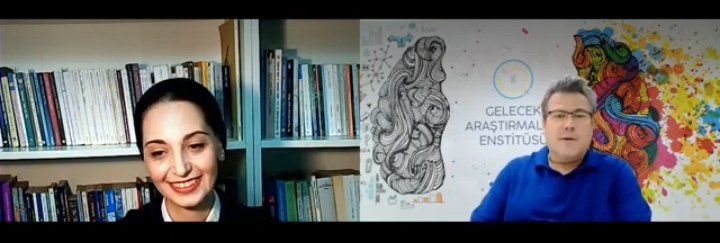
Source
Comments Off 
FEBRUARY 27TH, 2021
By BANU PLUIE
I am proud to have a contribution in this study.
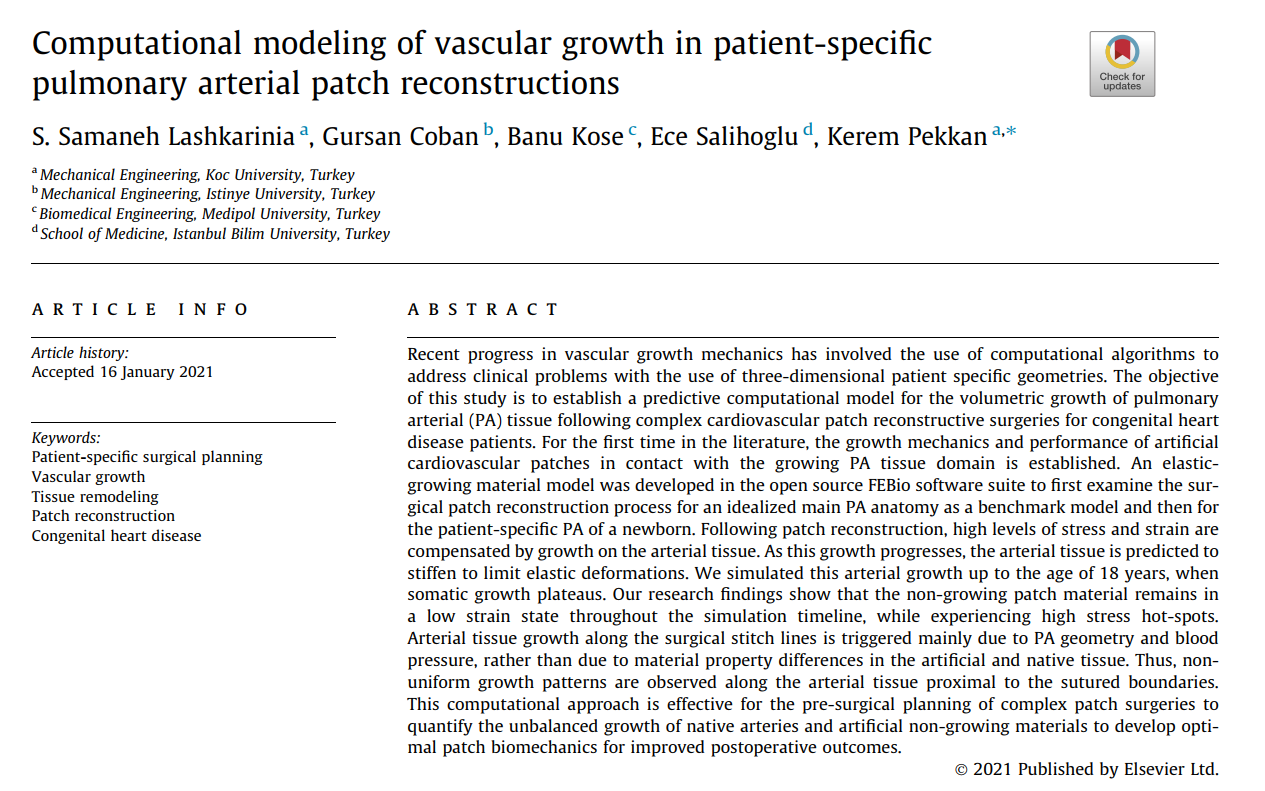
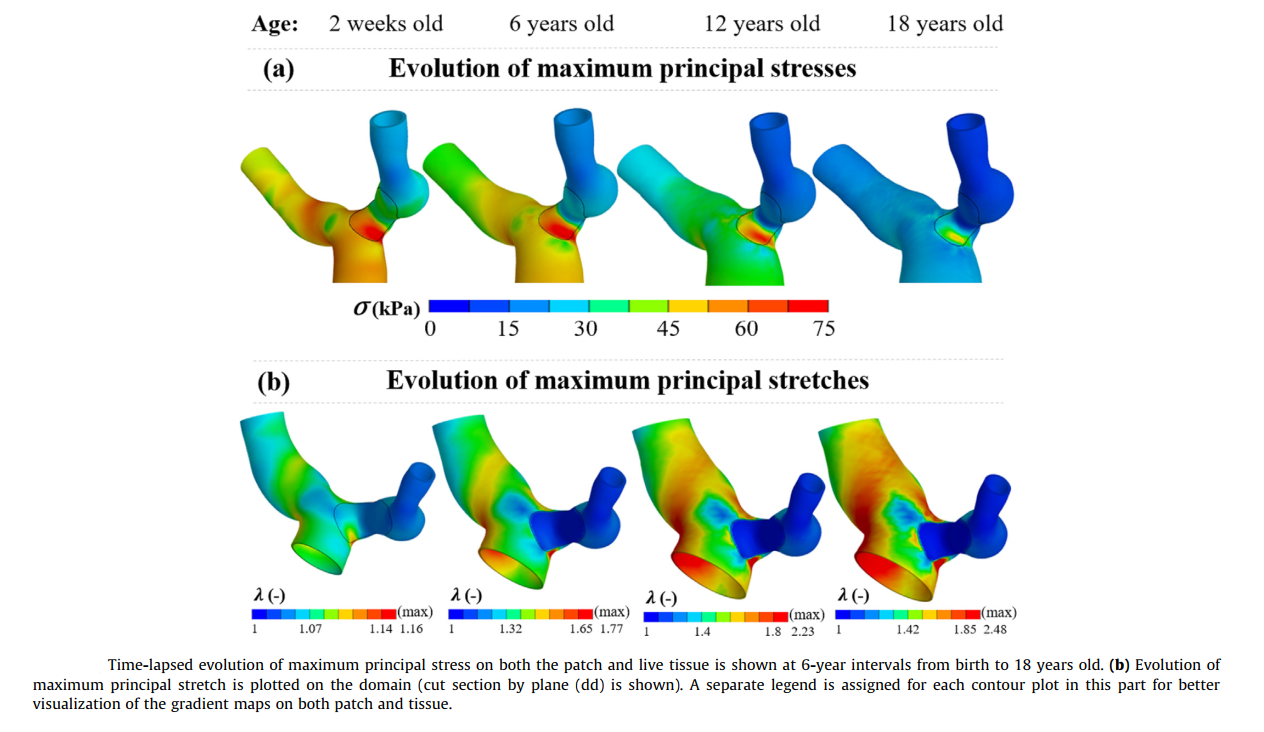
Comments Off 
APRIL 16TH, 2018
By BANU PLUIE
The Mimics Innovation Suite (MIS) allows you to automate your workflows, potentially saving a lot of time, achieving more consistency, and reducing repetitive work and human error. That is an easy thing to say, but if you do not have much experience with scripting, we all know that it can be tough to get started. If you want to speed up your learning curve and get a head start, then this could be an interesting training for you.
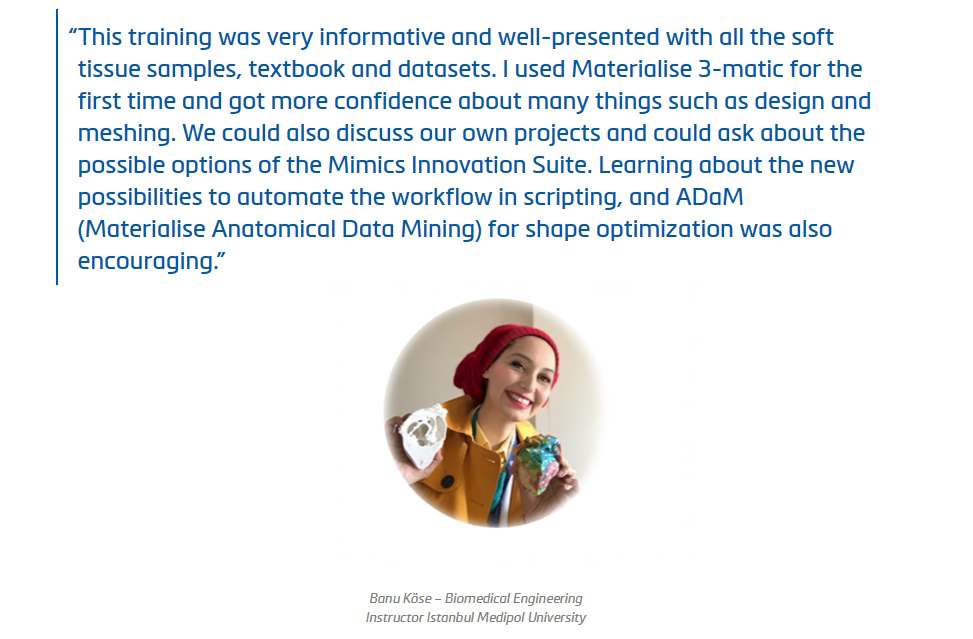
Topics will include:
Basics of Optimizing your Workflow in Mimics 21 and 3-matic 13
How to write your first scripts
Introduction to Python
Hands-on training exercises for creating planning workflows (e.g. loading datasets, performing basic segmentation steps, landmarking, creating anatomical coordinate systems, designing custom implants)
Comments Off 
NOVEMBER 20TH, 2016
By BANU PLUIE

.
Computational Life is a young company which has the specialty on computational flow simulations and mathematical models for the medical technology field.
The validated software Digital Avatar Platform (DAP) of Computational Life is modeling human and animal body mathematically. It is testing physiological scenarios for drugs, medical devices and treatment methods.
Circulation system, cerebrospinal fluids, transport of pharmaceutical products throughout the body can be simulated for the human and animal body with DAP. It can also be modified due to the experiment.
They replied to me with a very warm and energetic mood when I wrote them. It is great that there are enthusiastic people in the medical technology field. I am sure that I will hear more about the news of Computational Life in the next days.
Thanks to Christian Contarino, Davide Chieco and Carlo Rivis for their innovative platform which brings a great help for clinicians, researchers, and engineers.
Please check their website for more information.
.
Comments Off 
OCTOBER 15TH, 2016
By BANU PLUIE
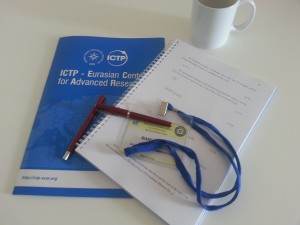
I had chance to present my works to authors and answer the questions of young curious physicisits at GEFIK2016 in Ege University. Discussing about medical physics and classical mechanics with physicists was a peerless experience.
Comments Off 
JANUARY 2ND, 2016
By BANU PLUIE
In multidisciplinary areas, it is very important to be able to meet with the team who can work in harmony.
For his work on 3D intracardiac models on surgical planning, Thanks to cardiovascular surgeon Dr. Okan Yildiz, we have been informed about and contributed to many pediatric cases and treatments since 2016.
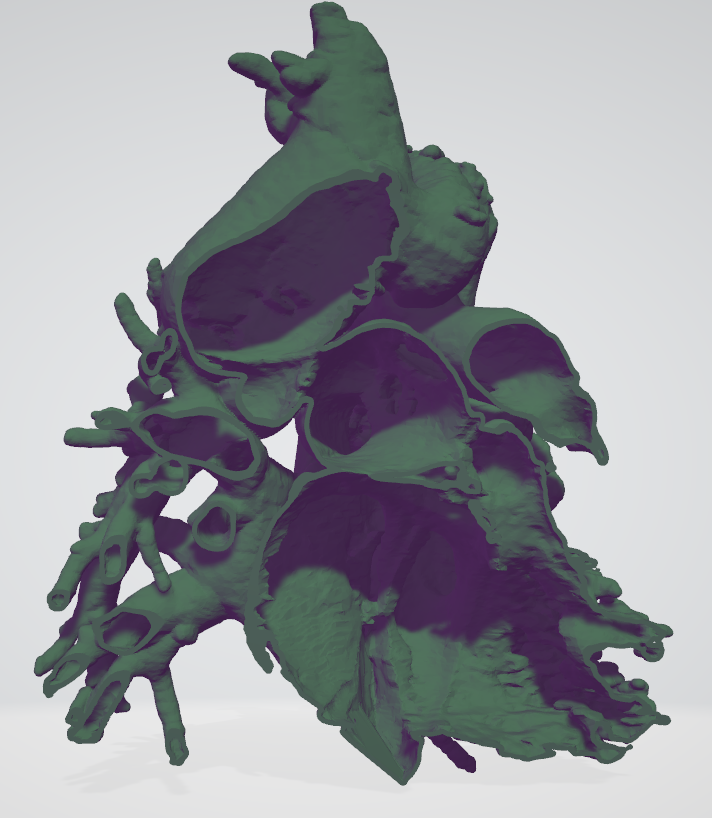
Comments Off 
DECEMBER 23RD, 2015
By BANU PLUIE
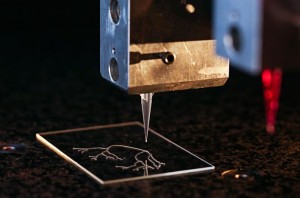
This sort of procedure is becoming more and more common among doctors and medical researchers. Almost every day, I receive an e-mail from my hospital?s press office describing how yet another colleague is using a 3-D printer to create an intricately realistic surgical model?of a particular patient?s mitral valve, or finger, or optic nerve?to practice on before the actual operation. Surgeons are implanting 3-D-printed stents, prosthetics, and replacement segments of human skull. The exponents of 3-D printing contend that the technology is making manufacturing more democratic; the things we are choosing to print are becoming ever more personal and intimate. This appears to be even more true in medicine: increasingly, what we are printing is ourselves.
Source: Newyorker
Comments Off 
DECEMBER 11TH, 2015
By BANU PLUIE
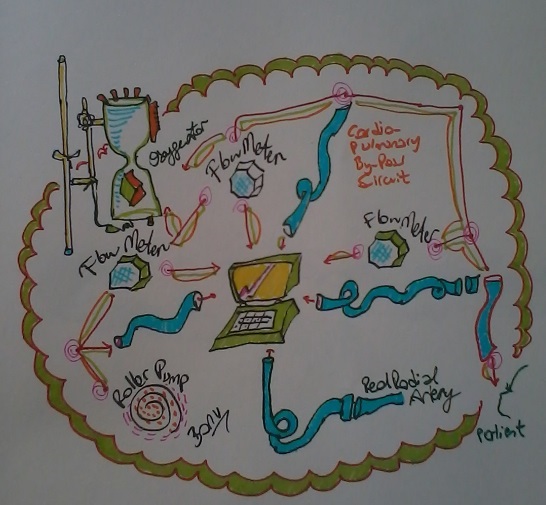
I simplify by drawing.
Comments Off 
NOVEMBER 9TH, 2015
By BANU PLUIE
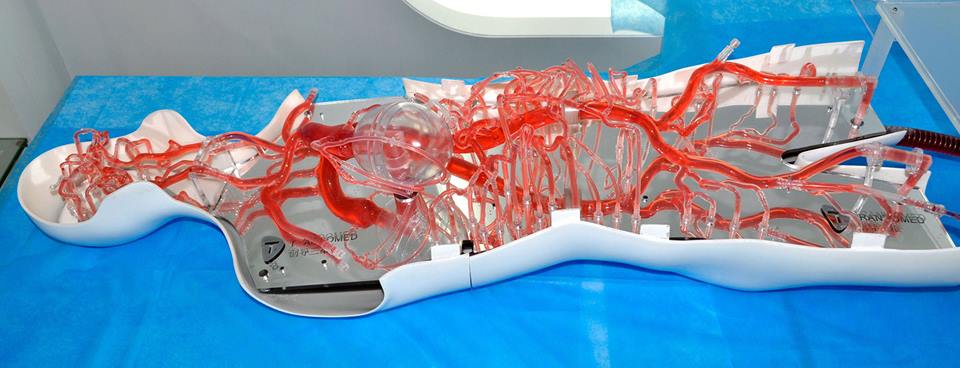
Trando Med will attend MEDICA 2017 in the Dusseldorf Germany from 13-16 November 2017. The booth is Hall 13 Booth F 9-05
Comments Off 
OCTOBER 5TH, 2015
By BANU PLUIE
Hemodyn, the first cardiovascular mechanics and surgical planning company of Turkey is taking place in StartUp Istanbul 2015.
Hemodyn is assisting the surgeons in the diagnosis and surgery planning of the congenital heart diseases in The Incubation Office of Koc University.
Hemodyn Team has always been an invariable place for my research vision. I want to thank to Kerem Pekkan, Şenol Pişkin and Volkan Tuncay by means of this event.
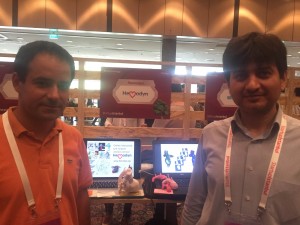
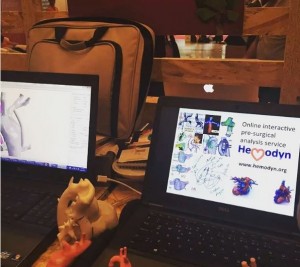
Link
Comments Off 
SEPTEMBER 29TH, 2015
By BANU PLUIE
26th Statistical Physics Days were held in İzmir Institute of Technology.
During the program organization, Prof. Nejat Bulut’s dedication and careful attention to every detail was so amazing that it will be a very nice experience in my mind.
It was an honor to be among the successful physicist academicians and to listen to their work. It was also my chance that I had the opportunity to talk about my own practice and find the opportunity to discuss it with very precious professors.
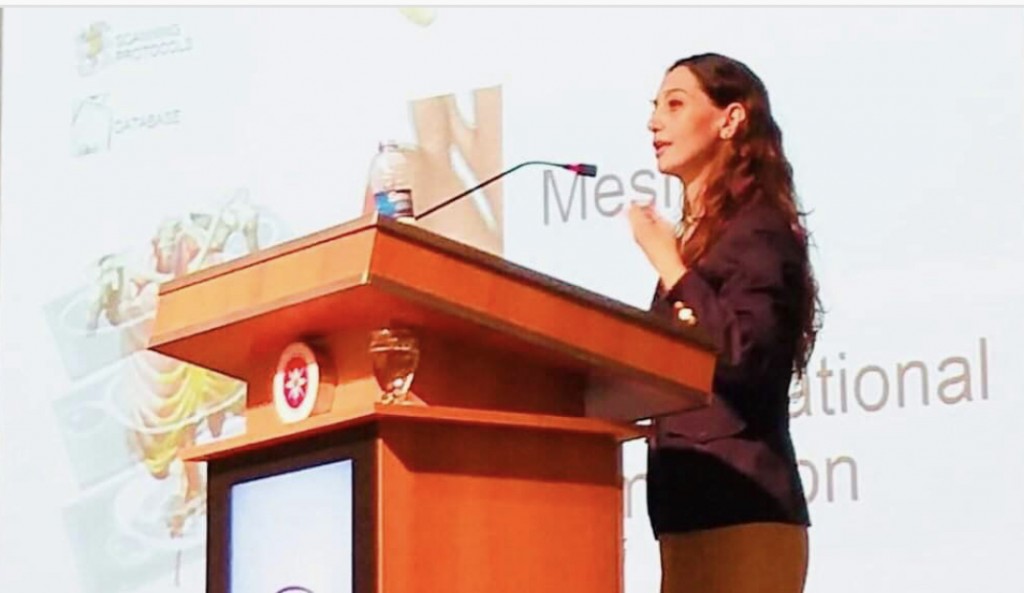
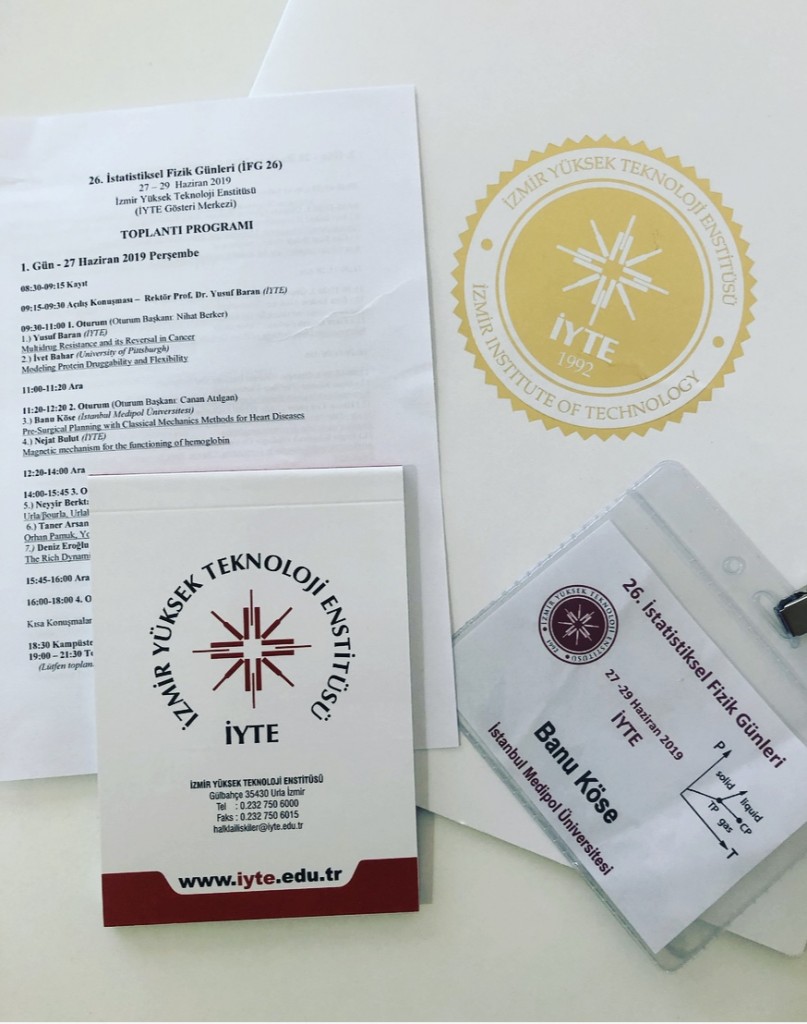
Comments Off 
SEPTEMBER 24TH, 2015
By BANU PLUIE
‘Having worked in product development for the past few years, Dr. Enrique Garcia had seen what 3D printers were capable of and began investigating the possibilities for creating models for pediatric cardiologists to use before an operation. She began by asking surgeons from around the country what they thought of the idea. To say that their response was overwhelmingly positive is an understatement. The value of this idea was immediately apparent.’
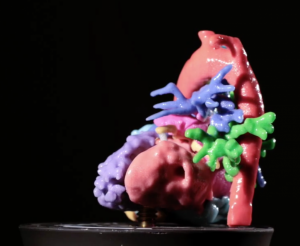
‘Pediatric heart surgery is the hardest thing that I can imagine a person doing. A surgeon doesn’t know what he’s going to see until he opens a child?s chest. Every heart is different and every cardiopathy is different,? said Garcia. ?A baby?s heart is the size of a walnut, and surgeons need to go in and move around structures that are as small and thin as a human hair, and they’re doing it with their own two hands. And all of this is occurring against a ticking clock.’
‘Having something in your hands, and being able to turn it any way you want, and to be able to cut and open it up and see the inside; and to be able to physically hold it, to feel it, is something that can?t be replicated on a computer.’
Read More in the source.
Comments Off 
SEPTEMBER 15TH, 2015
By BANU PLUIE
Researchers have created software that can model internal organs in ‘extreme 4D’.
The system, dubbed cSound, is currently being used by cardiologist Bijoy Khandheria, who has been fixing broken hearts for more than three decades.
Dr Khandheria describes the images as ‘exquisite’, and says it’s like opening up someone’s chest and watching their heart beat.’
‘Traditionally, ultrasound has allowed us to see the heart but not in as much detail as we might like,’ he said.
‘We used the signal to image the heart layer by layer, almost like a butcher using a knife, and then mentally splice the layers together to see the whole picture’.
Dr Khandheria and his colleagues at Aurora St Luke’s Medical Center in Milwaukee, have recently started ‘extreme 4D’ software.
The images are so clear that it allows doctors to see how blood swirls around clots in arteries.
This can then be used to measure the severity of blood leakage around the valves and assess the damages.
‘It’s almost as if I took out the valve and started turning it with my hands,’ said Dr Khandheria.
Read more
Comments Off 
AUGUST 17TH, 2015
By BANU PLUIE
Comments Off 
MARCH 16TH, 2015
By BANU PLUIE
I am very proud to announce that a friend of me is selected for The Medical Doctor of The Year Award in Istanbul.
He is not only a surgeon at the department of pediatric surgery of İstanbul Mehmet Akif Ersoy Chest & Cardiovascular Surgery Training & Research Hospital but also a PhD candidate at biomedical engineering and a collaborator of some interdisciplinary studies as surgical planning and computational blood flow dynamics.
Congratulations Dr. Altın!
Comments Off 
FEBRUARY 25TH, 2015
By BANU PLUIE
We depicted a live- surgical planning scenario with Prof. Erbil Oğuz and Kerem Girgin in Voksel 3D event. We used Simpleware for image processing, segmentation and designing.
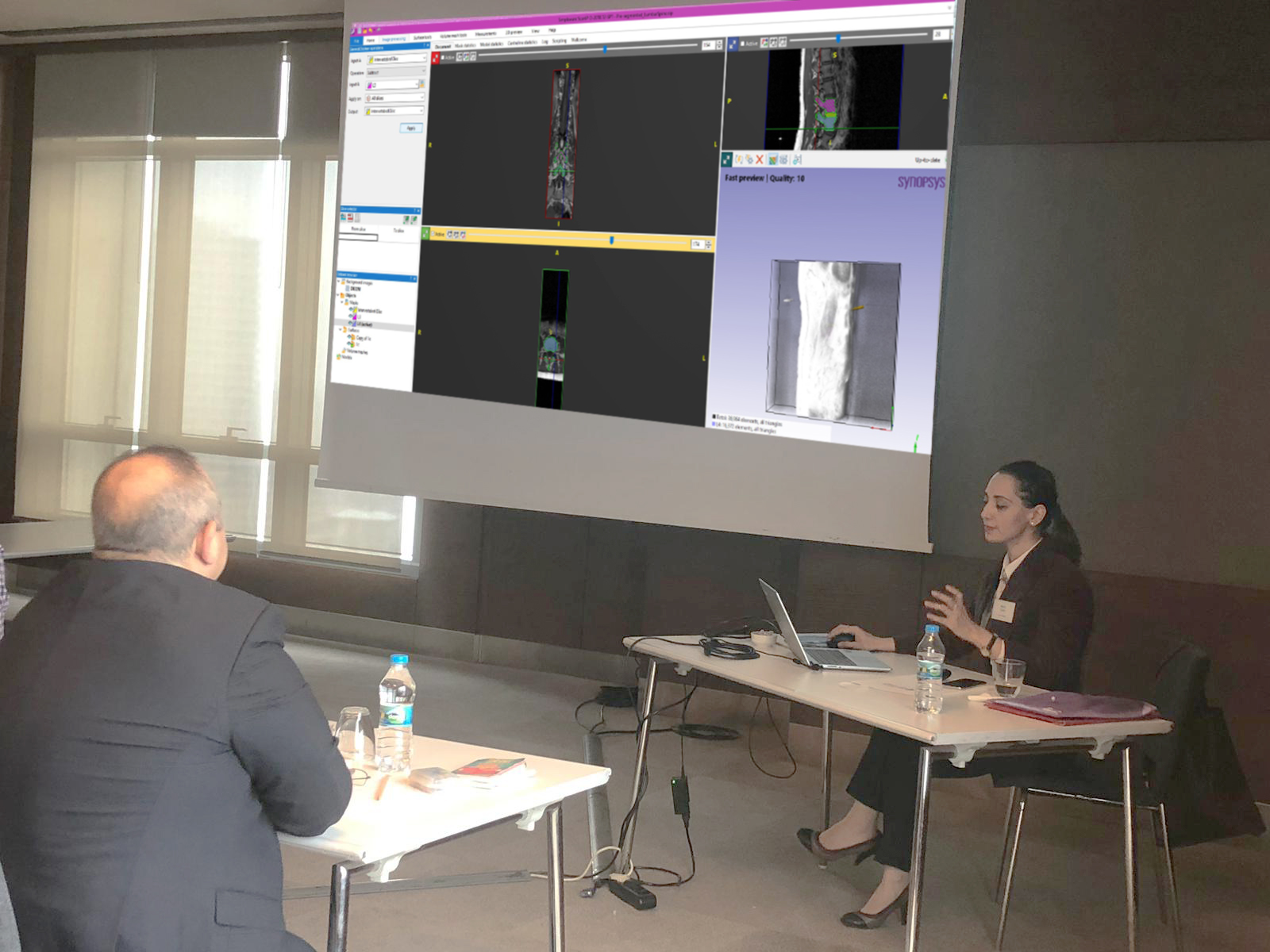
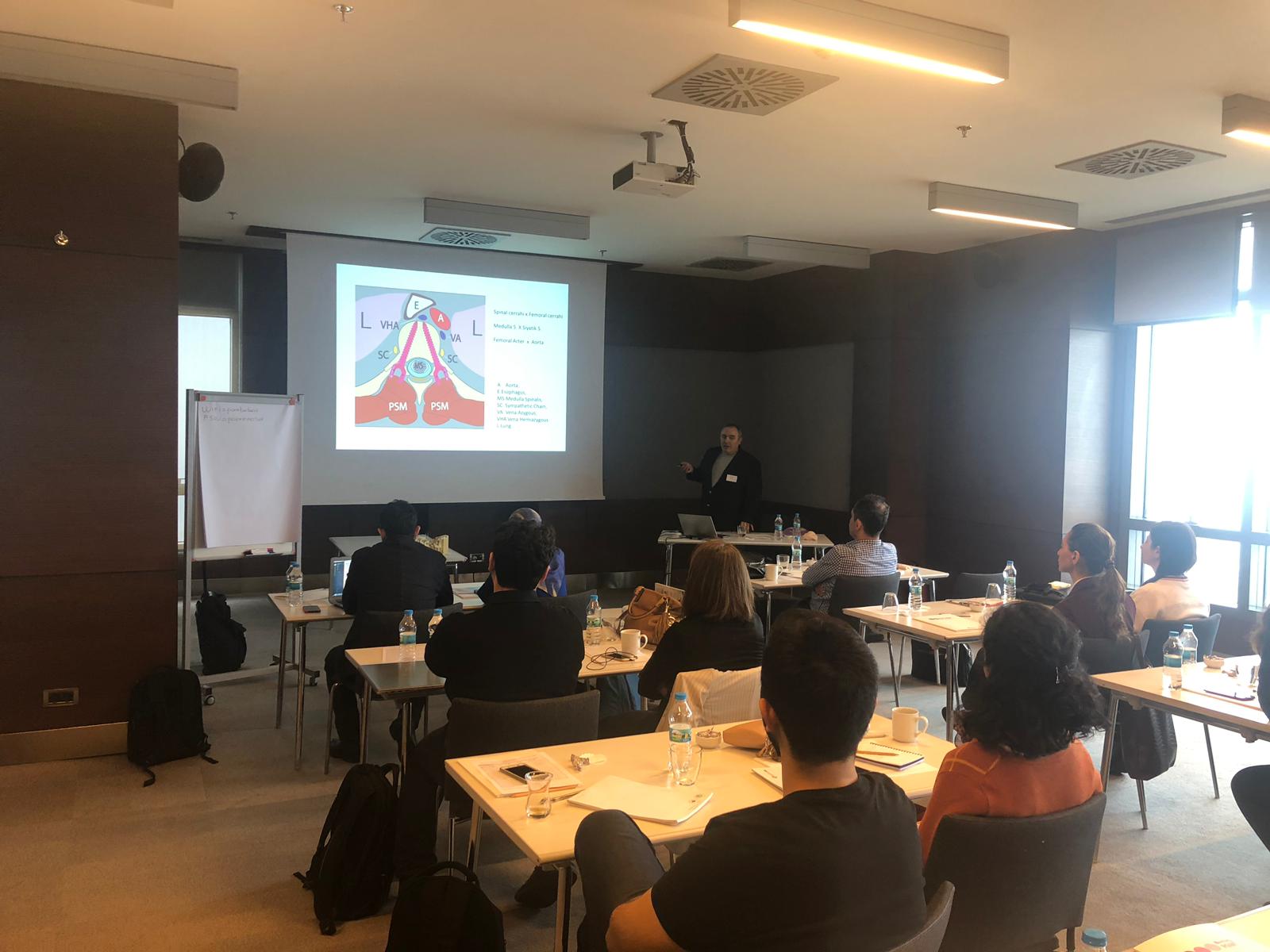
Comments Off 
FEBRUARY 3RD, 2015
By BANU PLUIE
Joint Interventional Meeting will be held on 12th February in Rome with the partipiciant TCT(Transcatheter Cardiovascular Therapeutics).
The meeting will be about the very latest Innovation on Interventional Cardiology and to approach New Techniques through educational� Live Cases.
Congress directors are Antonio COLOMBO, Eberhard GRUBE, Martin B. LEON, Carlo DI MARIO, Jeffrey W. MOSES, Gregg W. STONE
Click here for the congress program.
Comments Off 
JANUARY 19TH, 2015
By BANU PLUIE
Comments Off 
JANUARY 7TH, 2015
By BANU PLUIE
The 8th Istanbul Symposium will be held at Medipol University Mega Hospital.
10 January 2015, Saturday, 9:00-18:00
Symposium Comittee:
Prof. Dr. Atıf Akçevin, Yrd. Doç. Dr. Tijen Alkan-Bozkaya, Prof. Dr. Halil Türkoğlu, Prof. Dr. Akif Ündar
Click here for attending and the booklet.
Many thanks to Mehmet Hikmet Üçışık for his kind apprising.
Comments Off 
DECEMBER 31ST, 2014
By BANU PLUIE
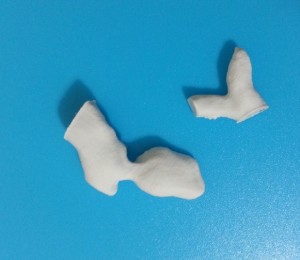
It was sensible showing 3D printed models when i was presenting my study.
Comments Off 
NOVEMBER 9TH, 2014
By BANU PLUIE
“- I wanted to be someone that encouraged young women to get involved in math, science, and engineering.”
Today, she’s doing just that.
As a product development engineer in the Medtronic cardiovascular division, Carol has been doing what she loves for more than 25 years. She provided critical technical expertise for the company’s first implantable cardioverter defibrillator and continues to collaborate with engineering teams and physicians to find new ways of doing things.
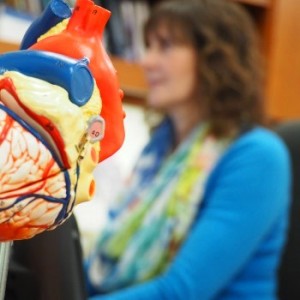
But on top of her day job, she has taken on another commitment – overseeing the Women in Science and Engineering (WISE) Initiative at the company.
Beginning in the spring of 2017, Medtronic introduced another opportunity that taps into an often overlooked talent pool. Careers 2.0 is a “returnship” program designed to provide paid internships for female engineers looking to get back into STEM-related careers. Research suggests close to 25 percent of women in engineering careers leave the industry by age 30, citing work culture or family commitments.
“This is a way to bring these talented women back into our technical and managerial ranks,” says Carol. “We are very excited about providing this amazing pool of talent an opportunity at Medtronic.”
“Overall, I want to inspire women,” says Carol. “Whatever your passion is; clean air, fighting hunger, or improving healthcare. Behind the biggest challenges of humanity, there’s an engineer working to find a solution.”
Source
Comments Off 
NOVEMBER 1ST, 2014
By BANU PLUIE
International Congress of the European Society for Cardiovascular and Endovascular Surgery (ESCVS) will be held on March 26th – 29th, 2015 in İstanbul in collaboration with International Congress of Update Cardiology and Cardiovascular Surgery.
The congress scientific program includes a session for women in cardiovascular surgery which will be held on March 28th.
Abstract Submission Deadline
December 22, 2014
…………………………………………..
Notification of Abstract Acceptance
January 2, 2015
…………………………………………..
Early Registration
until November 7, 2014
ESCVS 2015 Web Site
Comments Off 
JULY 1ST, 2014
By BANU PLUIE
Filmed at the 2014 STS Annual Meeting in Orlando, Florida, this roundtable discussion focuses on mechanical circulatory support. John Kern moderates the discussion with Pavan Atluri and Francis Pagani. The panelists discuss mechanical circulatory support, LVAD therapy, and heart transplantation. The discussion concludes with thoughts on the future of mechanical circulatory support.
Source: CTS
Comments Off 
JUNE 25TH, 2014
By BANU PLUIE
The inaugural 2014 AATS Cardiovascular Valve Symposium will bring international leaders in adult, congenital, and adult-congenital heart valve disease as well as diseases of the ascending aorta together for three days to discuss the latest information regarding management guidelines, imaging, pathology, minimally invasive approaches, percutaneous approaches, surgical techniques, devices, and long term results. Faculty presentations of the latest available data, techniques, and state of the art reviews will be supplemented by comprehensive surgical video sessions. In addition, the program will include abstract presentations selected by the program committee from submitted original work on a wide range of topics. This innovative program will allow attendees at all levels to advance their knowledge in aortic and ascending aorta, mitral, pulmonary, and tricuspid valve disease across all age spectrums during this AATS Symposium in Istanbul.
Click here for details.
PROGRAM DIRECTORS
David H. Adams
Mount Sinai School of Medicine
New York, New York, USA
Sertac Cicek
Anadolu Medical Center
Istanbul, Turkey |
|
Joseph S. Coselli
Baylor College of Medicine
Houston, Texas, USA
Pedro J. del Nido
Children’s Hospital
Boston, Massachusetts, USA |
|
Comments Off 
FEBRUARY 16TH, 2014
By BANU PLUIE
For the first time in the world, tissue structures were created by using self-supported live cells in a 3D bio-printer from medical images in the 3D Tissue and Organ Printing Project.
Sabancı University Faculty of Engineering and Natural Sciences? Manufacturing Systems Program professor Bahattin Koç and his stedents; Can Küçükgül, Saime Burçe Özler, Forough Hafezi printed artificial tissue construct at the Nanotechnology Research and Application Center (SUNUM) using self-supported live cells in a 3D bio-printing system.
The 3D Tissue and Organ Printing Project team used live human dermal fibroblast cells as bio-ink to print a part of aortic tissue. Human blood vessel tissue consists of mainly three types of cells: fibroblast, endothelial and smooth muscle. Fibroblast cells are the main cells of connective tissues. They synthesize the extracellular matrix and collagen protein needed for tissues. Endothelium is the thin inner layer of cells of blood vessels. Smooth muscle cells are found in inner organs such as blood vessels, esophagus and intestines. The scientists continue their efforts to maturate the blood vessel tissue created by fibroblasts as well as endothelial and smooth muscle cells in a bioreactor.
Read More
Comments Off 
NOVEMBER 14TH, 2013
By BANU PLUIE
XIX. International Biomedical Science and Technologies Symposium (Biomed) took place in Kuşadası, İzmir.
I had chance too meet Kamuran Kadıpaşaoğlu and Khoshrow Mottaghy in Artificial Organs Session.
When I was back to İstanbul I was pleased about the causerie with Kamuran Kadıpaşaoğlu and his students Emir Gökberk Eken and Saygun Güler. Many thanks Saygun for supporting me kindly to Adnan Menderes Airport.
Comments Off 
NOVEMBER 5TH, 2013
By BANU PLUIE
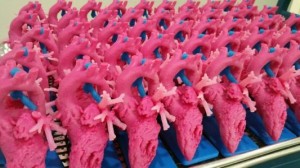
Alistair Phillips, MD, who is the Co-Chair for the American College of Cardiology, Surgeons Section tells about some of the impacts he has personally experienced using 3D printing in surgical settings as his participation in the 3DHEART program:
“The clinical trial is particularly exciting as it targets specific cases in which understanding of the anatomy will greatly enhance the surgical approach. A 3D printed replica of a patient’s heart will be created as part of the inclusion criteria to be in the study.Using 3D printing gave a better understanding of the Hybrid procedure, and allowed us to perform pulmonary valve replacement with a minimally invasive approach avoiding conventional method that required open-heart surgery. After coming to Cedars-Sinai we refined the pre-ventricular approach by utilizing a 3D printed models of patients’ hearts. We were able to simulate the implant into the right ventricular outflow tract.
Every surgeon is different. The education, experience, aptitudes, and attitude we bring to each equally nuanced and varied patient span an almost limitless spectrum and inform how we may utilize 3D printing for the benefit of our patients. The elegance of 3D printing is that it can create the individualized tools spanning this spectrum.
That said, however, what is not negotiable is the veracity of the models that we are receiving. Various materials and their corresponding colouring or rigidity may serve different functions in the hands of different surgeons, but ultimately we must have the utmost confidence in the fidelity of the models we are utilizing for pre-surgical planning. The more realistic the model is both in anatomical and textural preciousness will greatly enhance the application.
In all honesty, I would advise each hospital to start by really understanding the value proposition 3D printing offers across all specialities and, the culture of their institution. The best way to get answers to these very nebulous, complicated, nuanced directives is by retaining an outside vendor to provide as much of the services as possible, from the proverbial soup to nuts.
The excitement around the 3DHEART clinical trial is so great because it is the first organized, large-scale attempt to collect evidence of the efficacies of 3D printing in the practice of medicine and delivery of healthcare, not only in terms of optimized patient outcomes but also with respect to lower costs. If we can get reimbursement for 3D models, it is without a doubt a game-changer in terms of the practice of medicine, and a life-changer for many of our patients.”
Source
Comments Off 
SEPTEMBER 10TH, 2013
By BANU PLUIE
11th & 12th October 2018
Budapest, Hungary
Technology is changing faster than ever. Global megatrends – such as digitalization, resource scarcity, and the need for renewable energy – drive the demand for innovation and efficient product development. In today’s world of almost limitless computing power, numerical simulations need to be both accessible and accurate in order to enable innovation.

NAFEMS are pleased to announce the fourth European Conference on Multiphysics simulations in October 2018. It will cover the use of Multiphysics simulations in industry.
Source
Comments Off 
JULY 27TH, 2012
By BANU PLUIE
Comments Off 
JANUARY 24TH, 2011
By BANU PLUIE
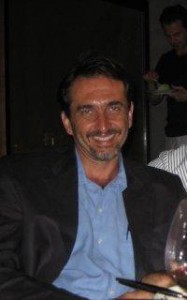
Biomedical Engineering Seminars’ speaker was Kamuran KADIPAŞAOĞLU and this has been the most incentive part of these meetings.
Image Source: Bahcesehir University
Comments Off 
JANUARY 15TH, 2010
By BANU PLUIE
I tried to show the knee anatomy with the MRI dataset of 3D Slicer (Harvard Medical School /Brigham and Women’s Hospital / Surgical Planning Laboratory).
Video: Knee Anatomy

![]() 3D Printing, 3D Slicer, ANSYS, Art, Artificial Organs, Banu Köse, Banu Pluie, BioFluidLab, Bioengineering, Biomaterials, Biomechanics, Biomed, Biomedical Science, Biophysics, Bioprinting, Biosecience, Cardiology, Cardiovascular Implants, Cerrahi, Circulatory Support Systems, ClinicianEngineerHub, Complex Systems, Congenital, Ece Salihoglu, Engineering, Finite Element Model, Fontan, Gradute, Heart, Heart Valves, Hemodynamics, Hepatic, IMAEH, Image Processing, K. Banu Köse, Kardiyovasküler, Kardiyovasküler Mekanik, Kevser Banu Köse, Laser Doppler, Liquid State, Materialise Medical, Medipol, Medtronic, Pediatric, Perfusion, Perfüzyon, PhD, Physics, Pulmonary, Radiology, Slicer, Structural Analysis, Surgery, SurgicalPlanning, Sıvı Hal Fiziği, TGA, The Journal of Cardiovascular Surgery, VSD, VirtalSurgery, Virtual Physiological Human, Windkessel, WomenEngineers, womenin3d
3D Printing, 3D Slicer, ANSYS, Art, Artificial Organs, Banu Köse, Banu Pluie, BioFluidLab, Bioengineering, Biomaterials, Biomechanics, Biomed, Biomedical Science, Biophysics, Bioprinting, Biosecience, Cardiology, Cardiovascular Implants, Cerrahi, Circulatory Support Systems, ClinicianEngineerHub, Complex Systems, Congenital, Ece Salihoglu, Engineering, Finite Element Model, Fontan, Gradute, Heart, Heart Valves, Hemodynamics, Hepatic, IMAEH, Image Processing, K. Banu Köse, Kardiyovasküler, Kardiyovasküler Mekanik, Kevser Banu Köse, Laser Doppler, Liquid State, Materialise Medical, Medipol, Medtronic, Pediatric, Perfusion, Perfüzyon, PhD, Physics, Pulmonary, Radiology, Slicer, Structural Analysis, Surgery, SurgicalPlanning, Sıvı Hal Fiziği, TGA, The Journal of Cardiovascular Surgery, VSD, VirtalSurgery, Virtual Physiological Human, Windkessel, WomenEngineers, womenin3d